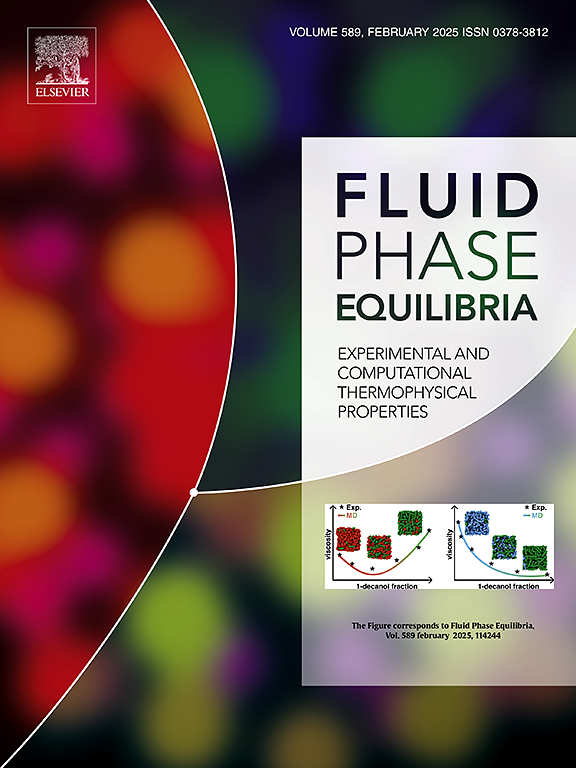掌握碳纳米管分散:工业和环境创新的简化模型
IF 2.7
3区 工程技术
Q3 CHEMISTRY, PHYSICAL
引用次数: 0
摘要
碳纳米管(CNTs)以其非凡的机械、电气和热性能而闻名,但其工业应用仍然受到聚集问题的阻碍。在有机溶剂中实现稳定的分散对于释放它们在先进复合材料、柔性电子、能源存储和环境修复方面的潜力至关重要。目前用于预测碳纳米管分散性的定量结构-性质关系(QSPR)模型依赖于计算密集型描述符,如量子化学或拓扑参数,这限制了它们的实际可及性。本研究引入了一个简化的预测模型,该模型仅使用三个直观的溶剂描述符——氢键容量、疏水性和一个新的π-π相互作用参数——来实现出色的准确度(训练r²= 0.917,外部验证r²= 0.963)和精度(RMSE = 0.236,而先前模型的RMSE = 0.337)。创新包括利用胺/酰胺官能团来稳定和消除对复杂计算工具的依赖。通过严格的统计检验(留多交叉验证q²= 0.823)和适用性域分析验证了模型的稳健性。通过优先考虑简单性而不影响性能,这项工作弥合了实验室规模的纳米技术研究和可扩展的工业应用(如水净化和污染修复)之间的差距,为传统的QSPR框架提供了一个用户友好的替代方案。本文章由计算机程序翻译,如有差异,请以英文原文为准。

Mastering carbon nanotube dispersion: A simplified model for industrial and environmental innovation
Carbon nanotubes (CNTs) are celebrated for their extraordinary mechanical, electrical, and thermal properties, yet their industrial adoption remains hindered by aggregation issues. Achieving stable dispersion in organic solvents is critical for unlocking their potential in advanced composites, flexible electronics, energy storage, and environmental remediation. Current quantitative structure-property relationship (QSPR) models for predicting CNT dispersibility rely on computationally intensive descriptors, such as quantum-chemical or topological parameters, which limit their practical accessibility. This study introduces a streamlined predictive model that uses only three intuitive solvent descriptors—hydrogen-bonding capacity, hydrophobicity, and a novel π-π interaction parameter—to achieve exceptional accuracy (training r² = 0.917, external validation r² = 0.963) and precision (RMSE = 0.236 vs. 0.337 for prior models). Innovations include leveraging amine/amide functional groups for stabilization and eliminating dependence on complex computational tools. The model’s robustness is validated through rigorous statistical testing (leave-many-out cross-validation q² = 0.823) and applicability domain analysis. By prioritizing simplicity without compromising performance, this work bridges the gap between lab-scale nanotechnology research and scalable industrial applications, such as water purification and pollution remediation, offering a user-friendly alternative to traditional QSPR frameworks.
求助全文
通过发布文献求助,成功后即可免费获取论文全文。
去求助
来源期刊

Fluid Phase Equilibria
工程技术-工程:化工
CiteScore
5.30
自引率
15.40%
发文量
223
审稿时长
53 days
期刊介绍:
Fluid Phase Equilibria publishes high-quality papers dealing with experimental, theoretical, and applied research related to equilibrium and transport properties of fluids, solids, and interfaces. Subjects of interest include physical/phase and chemical equilibria; equilibrium and nonequilibrium thermophysical properties; fundamental thermodynamic relations; and stability. The systems central to the journal include pure substances and mixtures of organic and inorganic materials, including polymers, biochemicals, and surfactants with sufficient characterization of composition and purity for the results to be reproduced. Alloys are of interest only when thermodynamic studies are included, purely material studies will not be considered. In all cases, authors are expected to provide physical or chemical interpretations of the results.
Experimental research can include measurements under all conditions of temperature, pressure, and composition, including critical and supercritical. Measurements are to be associated with systems and conditions of fundamental or applied interest, and may not be only a collection of routine data, such as physical property or solubility measurements at limited pressures and temperatures close to ambient, or surfactant studies focussed strictly on micellisation or micelle structure. Papers reporting common data must be accompanied by new physical insights and/or contemporary or new theory or techniques.
 求助内容:
求助内容: 应助结果提醒方式:
应助结果提醒方式:


